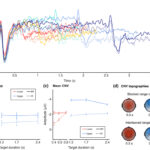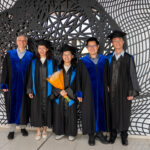When a salient distractor frequently appears in one specific location, it causes less interference over time, known as the distractor-location probability cueing effect based on long-term statistical learning. Additionally, the location of the previous distractor can also be suppressed in short term,. Recently, Qiu and colleagues (2023) adopted the additional-singleton paradigm and tracked the temporal dynamics of these effects using lateralized event-related potentials (L-ERPs). They revealed that the long-term, statistically-learned effect was associated with an early N2pc component that reflected a learned top-down prioritization of the frequent distractor location. On the other hand, the short-term, inter-trial adaptation effect was reflected in an enhanced SPCN response, indicating that establishing whether an intentionally selected item is a relevant target or an irrelevant distractor is more demanding at the previous rejected distractor location. The study suggests that both top-down and bottom-up saliency signals contribute to location-specific suppression effects during visual search.
The study has been accepted for publication in Psychophysiology.
Reference
- Qiu, N., Zhang, B., Allenmark, F., Nasemann, J., Tsai, S.-Y., Müller, H. J., & Shi, Z. (2023). Long-term (statistically learnt) and short-term (inter-trial) distractor-location effects arise at different pre- and post-selective processing stages. Psychophysiology, https://doi.org/10.1111/psyp.14351.




